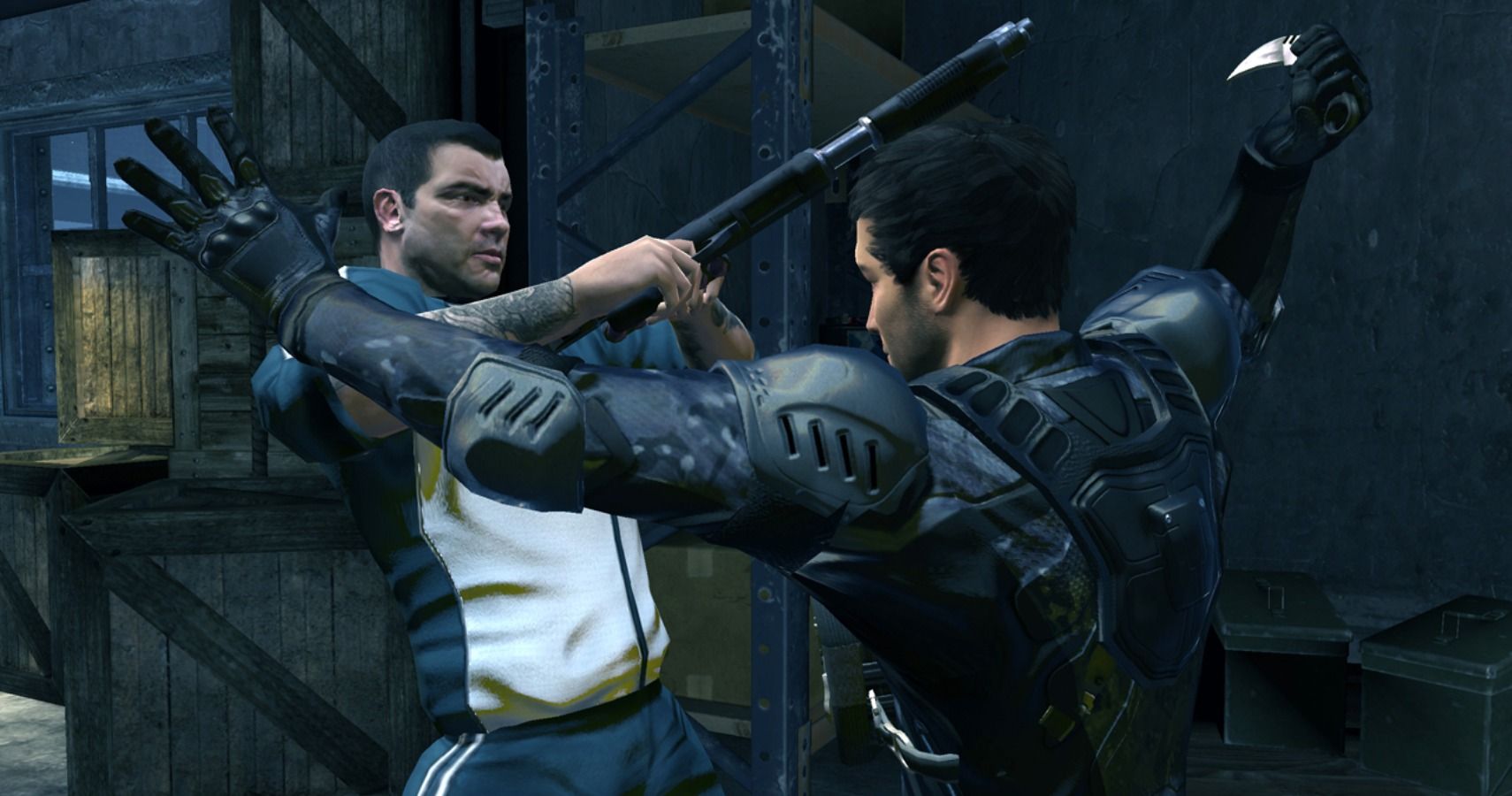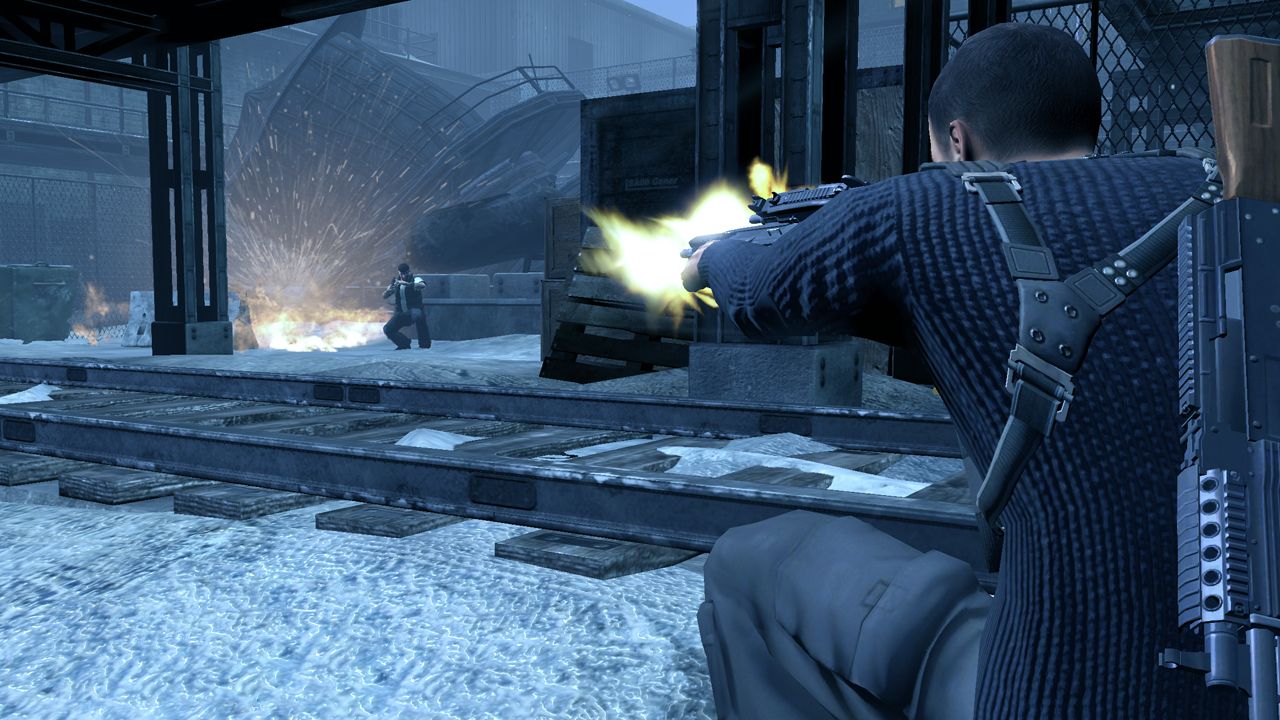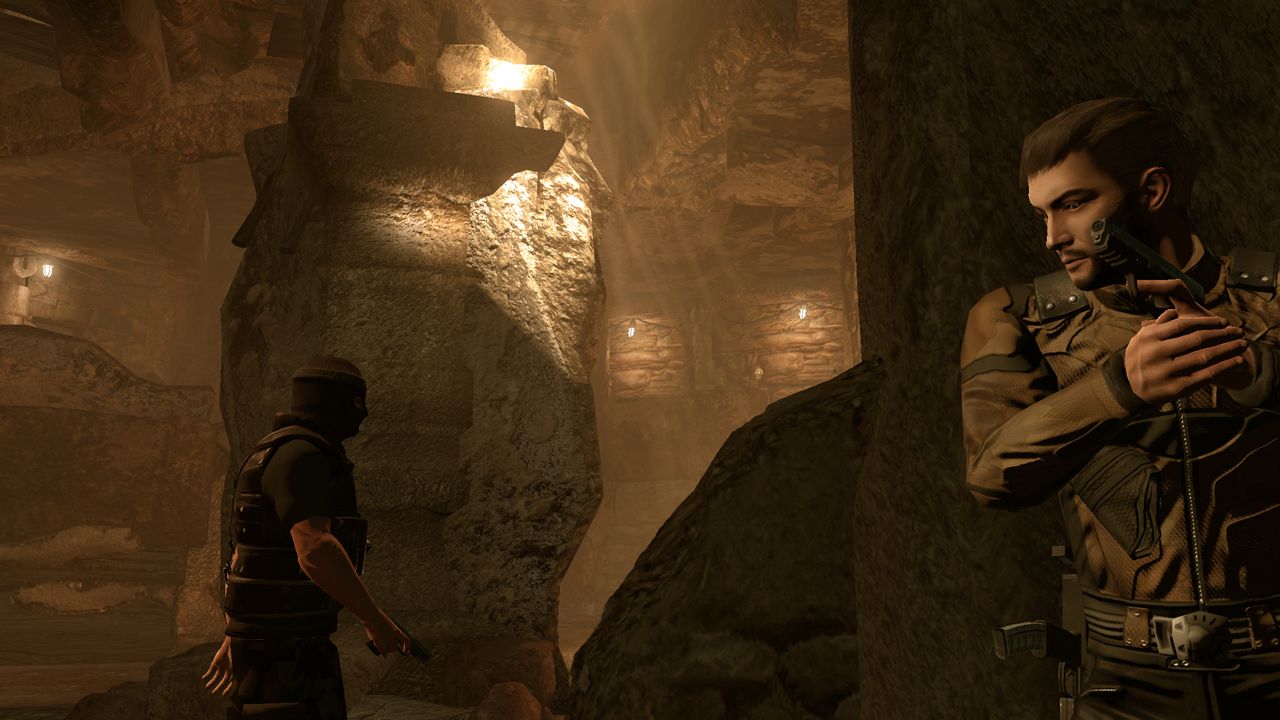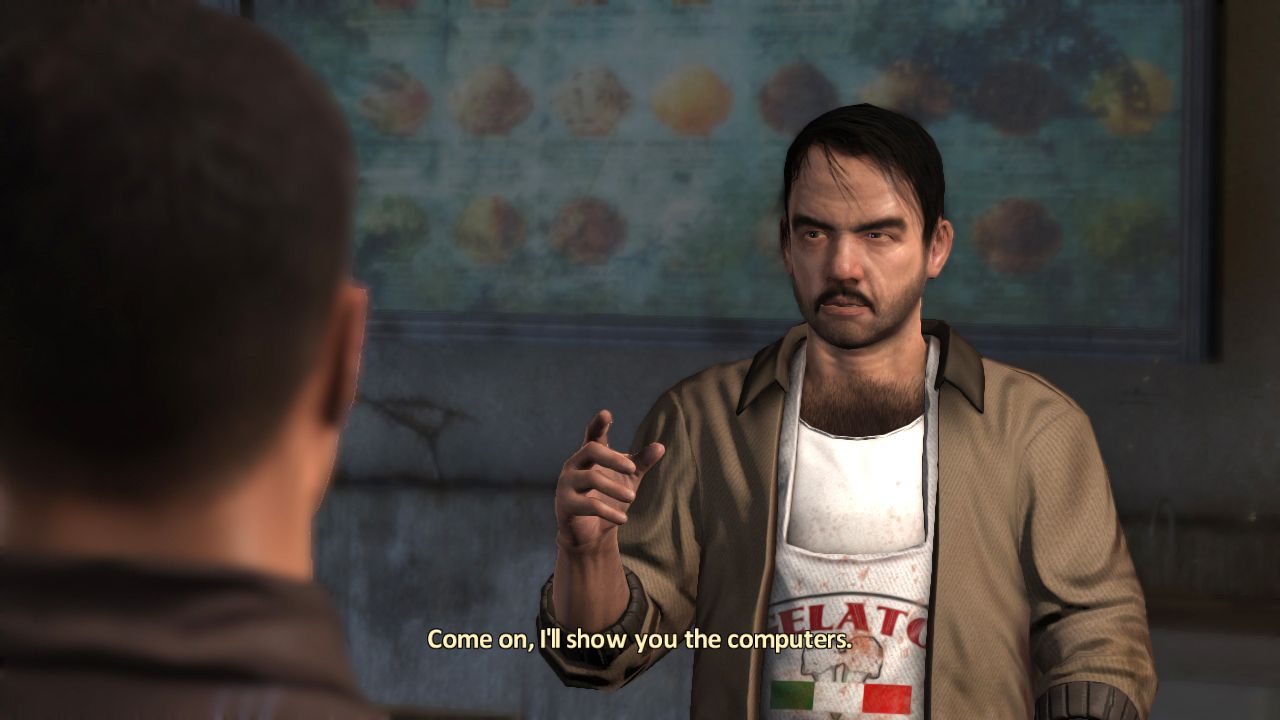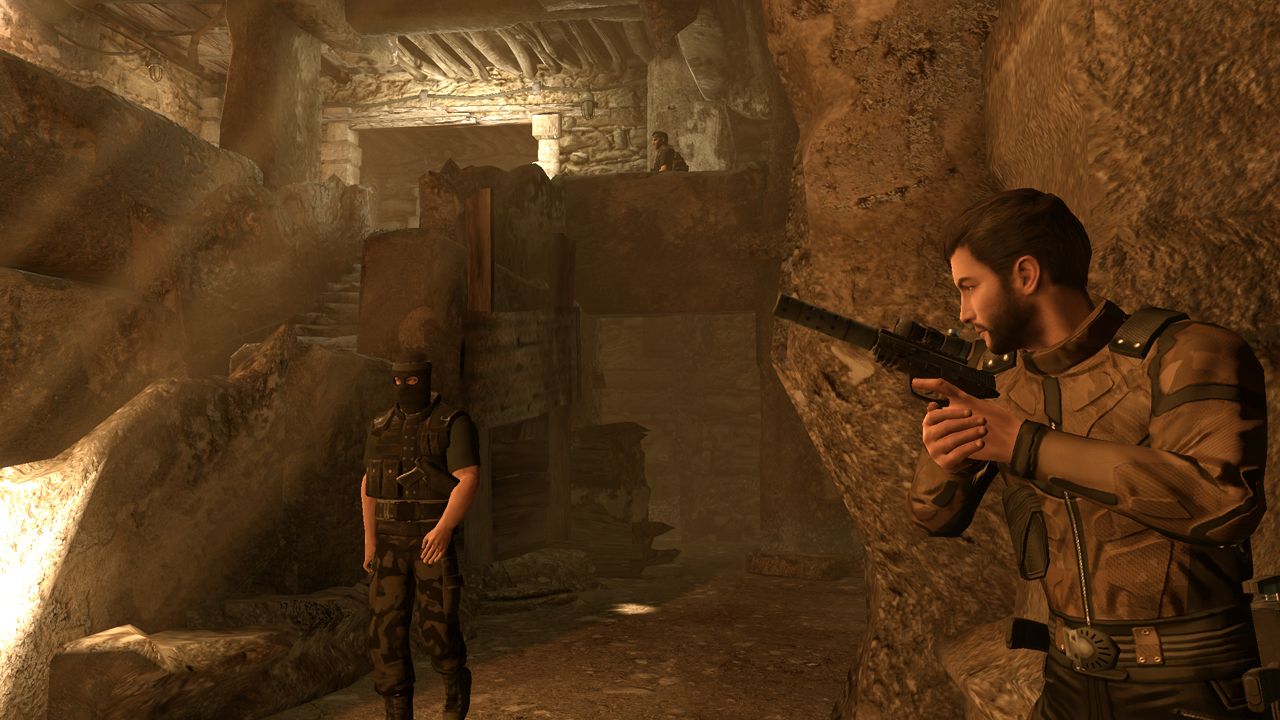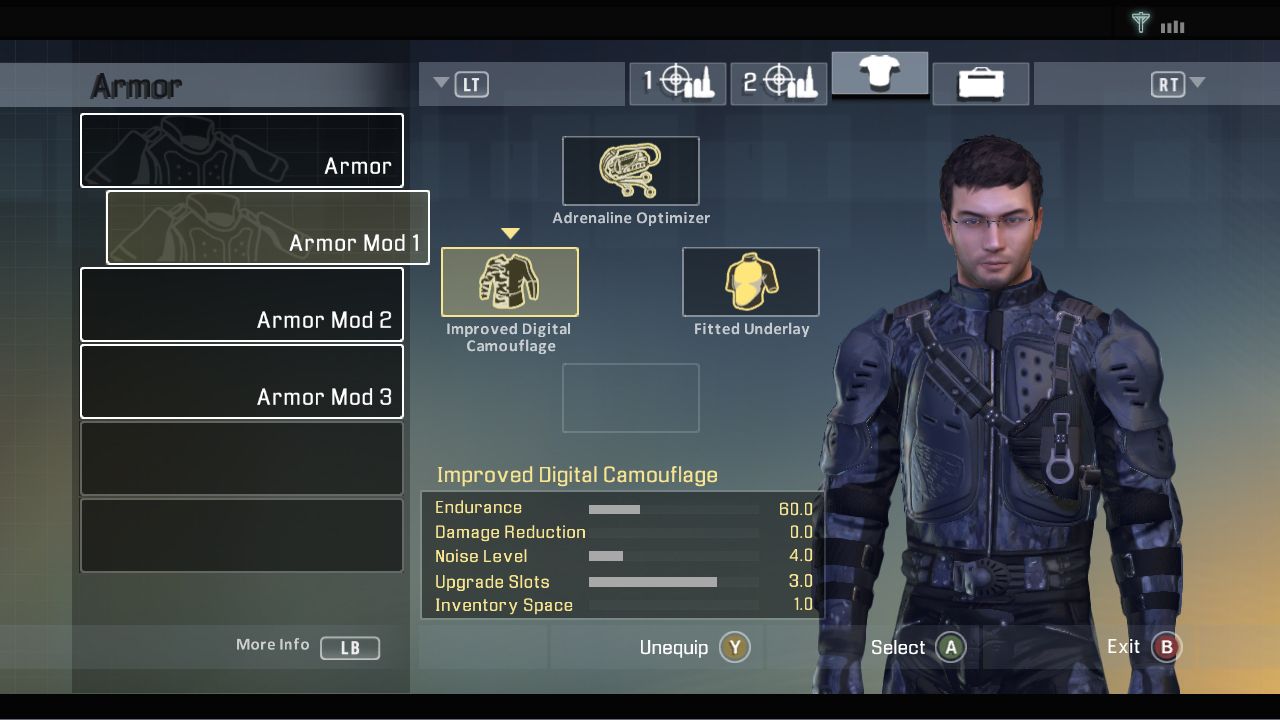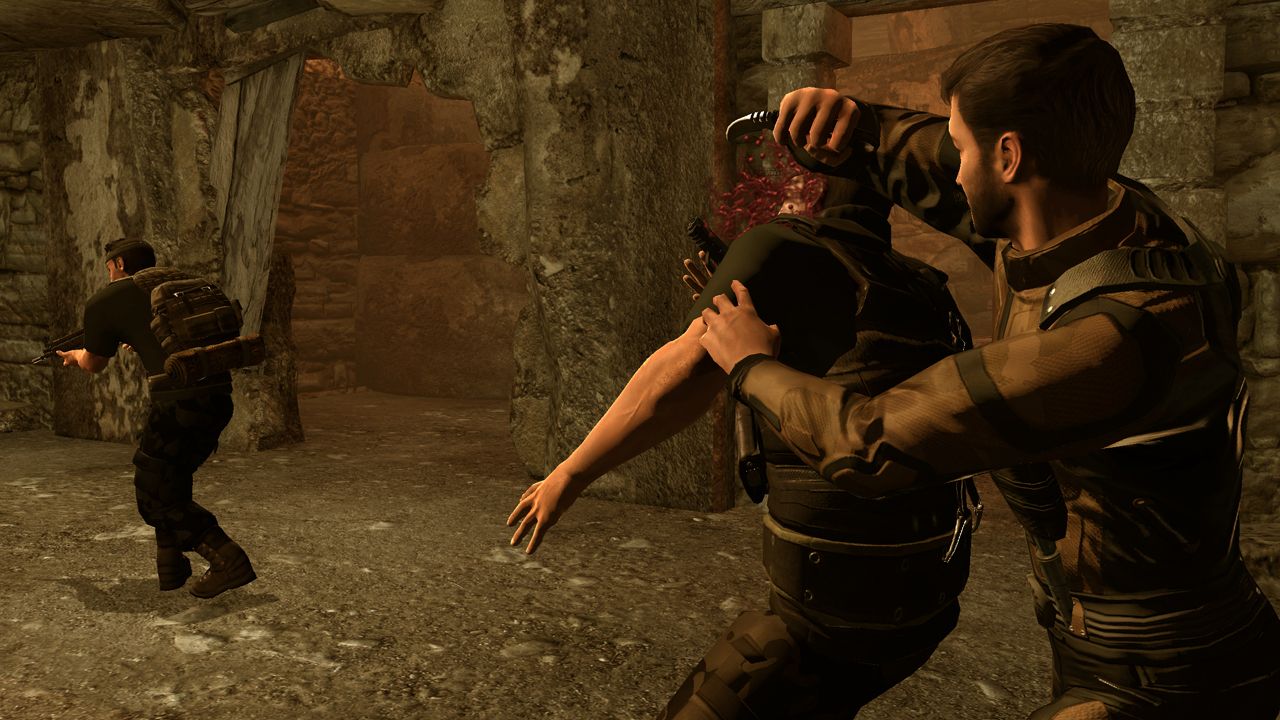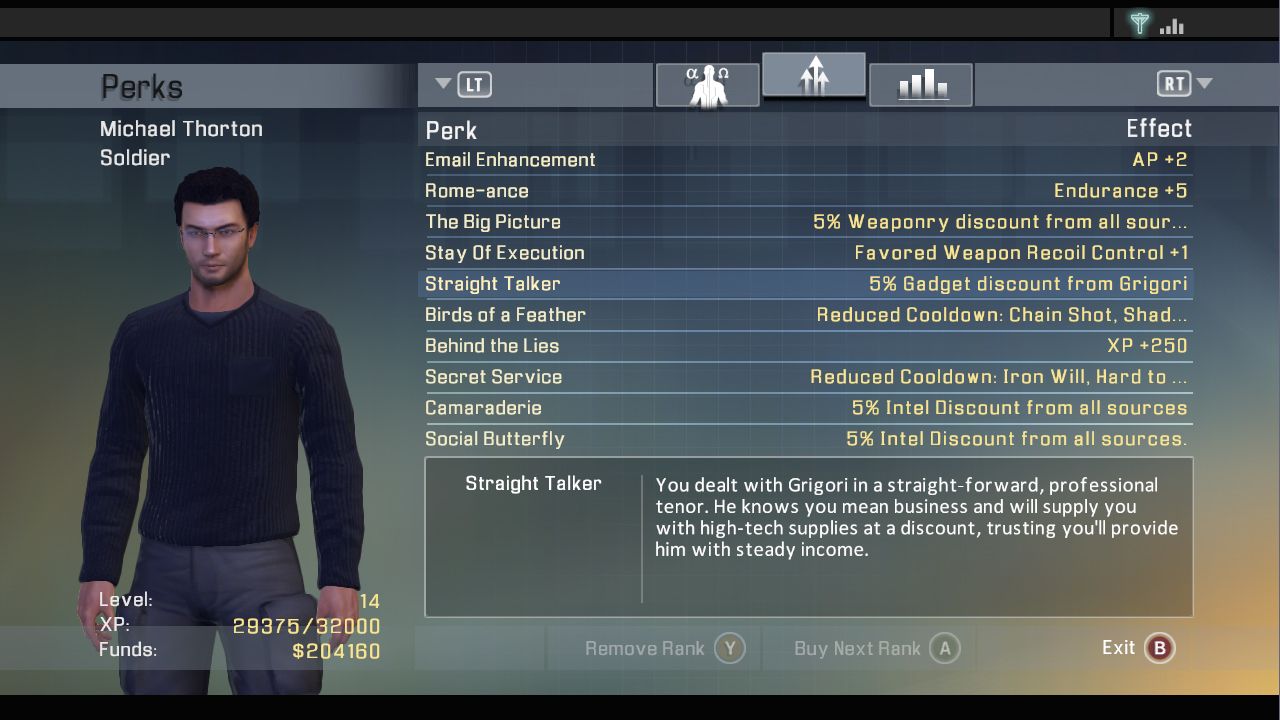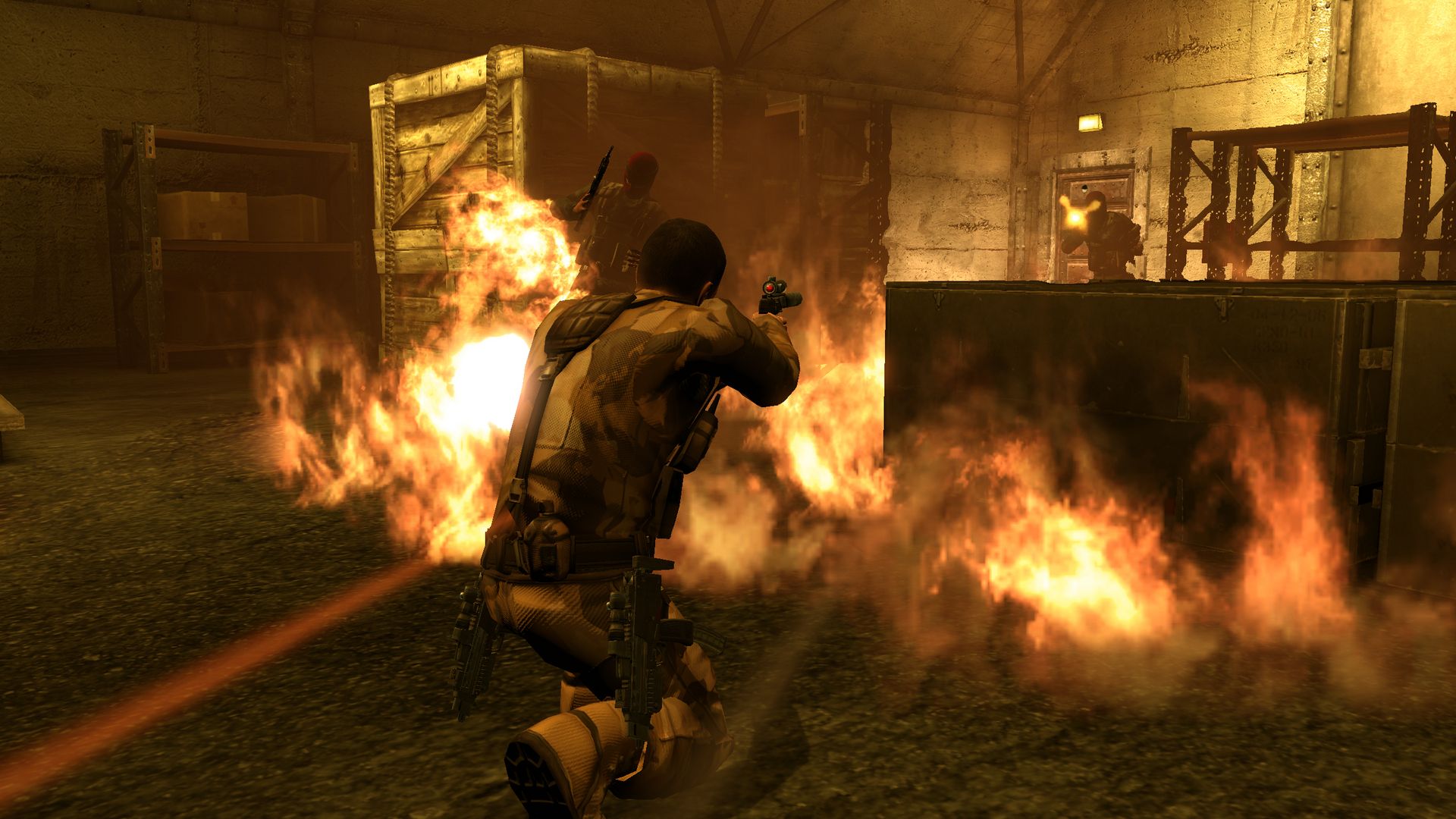Where many Western RPGs of the era were built around binary choices, 2010’s Alpha Protocol asked you to become a chameleon. Playing as Michael Thorton, you’re a super spy who can flit between various archetypes - the three JBs: Jason Bourne, James Bond, and Jack Bauer. You’re a master manipulator who can be suave, unstable, professional, and anything in between. You wear multiple masks. It’s fitting because Alpha Protocol had many faces of its own throughout development.
“I feel like a second Alpha Protocol game could have been really, really good,” former Obsidian designer Patrick K. Mills tells me. “There was a lot on Alpha Protocol that we were figuring out at the time, we didn't know how to do a lot of the stuff that we were doing. I feel like the second one could have been interesting.”
When Mills came onto the project, Obsidian was already on its third vertical slice - essentially a proof of concept to show the publisher what the game could be. The team knew what the story was and where it was heading, but they were struggling to define it mechanically. Arguably, it’s something that the developer never really figured out.
“We knew it was a tactical espionage RPG in the vein of your favorite spy movies and your favorite spy media,” Mills remembers. “And so we had an idea of the tone, we knew our themes. We had our concept for our main character which stuck around: you can play it any of these three different ways. And we have these three different spy archetypes. But in terms of how it played, and how the levels would work, all of that stuff was changing a lot.”
One point of contention was the gunplay. How do you balance a spy game where stealth and action are supposed to be equally viable approaches with the fact it’s also an RPG?
It’s worth noting that the very definition of what constitutes an RPG was still being defined in video games at the time. Nowadays, RPG can mean myriad things - conversation options, loot, weapon and armour statistics, or levelling up, for example - but back then, there was one thing intrinsically tied to the label: dice rolls. Of course, a hidden dice deciding whether or not your dead-on headshot misses doesn’t exactly gel with the concept of stealth.
“It was a strongly held opinion among most of the design staff that we shouldn't have stats for guns, and that the guns should just work like guns work,” Mills tells me. “We felt like [a hidden dice roll] didn't just break stealth systems, but it also breaks a certain level of expectation.”
Before working on triple-A games, Mills was a member of the modding community and created a Quake mod called Action Quake. The mod is kind of a precursor to Counter-Strike and Valorant, tweaking the lethality of guns and the squishiness of players to introduce more immediate, realistic violence to the shooter’s maps. The mod was born from Mills and his friends playing custom games where health was set at 100, there were no health and armour pickups, and the only gun available was the railgun, which happens to do 100 damage. One shot, one kill.
“In an action movie, you never have to shoot a guy six times before they go down,” Mills says. “You shoot them once or twice, and they go down. And that feels good. And that's why most shooters feel like that these days, because it actually feels good. You have a certain expectation of what happens when you hit someone with a bullet.”
The team wanted to apply this same logic to Alpha Protocol, but publisher Sega had different plans. You see, it had commissioned Obsidian to make an RPG. People don’t just immediately drop dead when you shoot them in an RPG - at least, they didn’t in the early 2000s.
“Sega’s feeling was that if you did that, people would think it was an action game and not an RPG,” Mills remembers, before explaining that it was a valid concern from the publisher at the time. “They were paying Obsidian to make an RPG. Mass Effect (2007) had combat similar to Alpha Protocol. It wasn't our guide, because Mass Effect actually came out pretty late in Alpha Protocol’s development, but when we saw Mass Effect’s combat, we're like, ‘Hey, they did the same thing’. But then, of course, they did Mass Effect 2.”
Mass Effect 2 released four months before Alpha Protocol and featured snappy, responsive combat with reactive enemies and satisfying feedback accompanying each shot. By the time Alpha Protocol released, it looked archaic by comparison.
“I'm like, ‘Motherfuckers. They did it and it feels good. Argh’,” Mills laughs.
True connoisseurs, of course, realise that Alpha Protocol’s charm lies outside of the moment-to-moment play. It’s in those three spy archetypes, the time-limited conversation options, and how almost every action you take has consequences.
“Choice and consequences are a relatively new addition to what makes an RPG - it's constantly evolving,” Mills says. “I think Alpha Protocol’s innovation is that it's not just that choice and consequence was frequent, or that there was lots of it, it's that it was interesting. The level of reactivity that it created was higher, I think, than any game that I've played since.”
Unfortunately, for many, it was hard to look past just how much jank you have to contend with to see how those choices play out. As much as I love the game, there’s no denying that Alpha Protocol is a bit of a hot mess. Obsidian, a studio most famous for making sequels to other people’s games, was working on its own thing, and that thing was different to everything else it had worked on. The studio was also using the Unreal Engine for the first time, learning as it went. Even after the shift from action to a more traditional RPG, it was difficult to define what the game was.
At one point, Obsidian spent half a million dollars creating a huge set-piece to place early in the game. The scene wouldn’t have looked out of place in Uncharted, seeing the hero fight through a cargo plane before parachuting to safety. When the idea was scrapped, that decision cascaded and affected the content following the set-piece, meaning much of the work already half implemented needed to be reshaped.
“We had a whole level for that,” Mills says. “It tied into the story where you would go with your handler, who at the time was Yancy [Westridge]. All of the characters in Alpha Protocol have existed in multiple forms. Yancy is one of the main characters. He's one of the guys who runs the Alpha Protocol division, and early on, he's your trainer. And then towards the end of the game, he winds up potentially becoming an antagonist, depending on choices that you make. But that guy was originally going to die at the beginning of the game. It was very much a ‘your mentor dies’ moment. And that was all completely scrapped.
“We knew the characters we had were interesting. Even if they needed to completely change, they were still the same character. Yancy was a straight-laced spy guy who helped you and was your mentor. And that didn't really change. It's just that we sort of deconstruct it a little bit and say, ‘Well, okay, he's a true soldier and so he's going to believe in his mission’.”
That method of deconstruction wasn’t just something the team did with the characters, either. Mills worked across various sections of the game, but his biggest contribution was the Rome location. One particular mission in Rome sees Thorton overlooking an estate through the scope of a rifle. He’s there to identify a target - Jibril Al-Bara - and assassinate them. You’re also free to take out anyone walking the grounds, as long as you don’t do it in full view of anyone else, and each kill can potentially have repercussions down the line because you don’t have intel on who your target is meeting. It’s a mission that perfectly captures the ambiguity of being a spy.
Where other missions in Alpha Protocol allow for free movement through the environment, this one sees your feet planted. When you clear one area, there’s a fade to black and you move up to get a closer view. That’s because the level is all facades - it’s an environment that was built for a cutscene that was scrapped, and Mills pushed to repurpose it into something else entirely.
“All of that was going to get thrown out and I was like, ‘No, I can come up [with something]’, Mills explains. “So I came up with the idea of a sniper mission where you don't control [Thorton] at all.”
In fact, the entire Rome section of the game was Frankensteined together from recycled levels that were originally meant to be used elsewhere. When the story changed, Rome was at an advanced stage in terms of level design, but something happened that meant none of it worked anymore. You see, originally, Alpha Protocol was planned as a series of levels, but Obsidian decided to change the structure, creating a series of hubs that players can tackle in almost any order. The idea was that your actions in one area can impact another, and a lot of completed work didn’t fit this new vision.
“[Rome] was part of that change,” Mills remembers. “There were also elements of Rome that just weren't working. We had to cut a whole side plot. And without that, a lot of the other stuff no longer made sense. So we had to come up with a whole new story for it. I remember writing the new story for Rome in a week, and just using all of the levels that I knew that we had and saying, ‘Okay, we'll use this level for this. This used to be level four, now it's level one. This one used to be the last level and now it's level three’.”
One of Rome’s levels is a series of ruins that were originally built to represent Pompeii - these were renamed and repurposed to be fictional, nondescript ruins on account of the fact they didn’t look anything like Pompeii. There was also a highrise level originally built for Rome that was either scrapped or sent to the Taipei section, on account of the fact there aren’t many skyscrapers in Rome. At one point, Mills wanted there to be a set-piece where you could shoot an environmental hazard - a truck full of bees - and the bees would escape and attack everything around the truck. That one buzzed off, too.
The only thing keeping the story anchored was the protagonist and that core concept of the three archetypes. The idea behind it was to move away from the good and evil binaries of other RPGs and create something more fluid, where you’re reacting under time constraints. Alpha Protocol’s NPCs have their own preferences when it comes to attitude, and you have to use your best judgement to respond in kind. Rather than players doing a “Paragon” playthrough, they’re swapping out masks to suit the situation.
“You let a person have three different characters, but what happens if they're constantly switching between them? It becomes incoherent all of a sudden,” Mills explains. “Alpha Protocol’s answer to that was no, because you have the world react to you acting incoherently.”
Rome’s main villain is a man called Conrad Marburg, and he hates it when people are unprofessional. He’s a spy who once did Thorton’s job, and he expects that job to be done a certain way. He might have joined the other side, but he’s a cynical professional to the core. He doesn’t like Rambos.
Thornton eventually confronts Marburg and they have a fight, but when the fight is about to turn, the villain goes to leave and you have a chance to try and goad him back into it. Choosing an asshole response is the only way to do it, but it only works if you’ve consistently acted like an asshole through the entire game - otherwise he sees through your attempt to bait him. This flexibility is what makes Alpha Protocol such a cult classic.
“A lot of the characters in Alpha Protocol are like that, because they know you have a reputation,” Mills explains. “And your reputation builds as you move through things and how you treat one character can get back to another character.”
It’s a little more nuanced than “genocide or no?”, to say the least. Of course, this approach is a hard sell to a publisher. It’s easy to see that your choice has a consequence when it’s between choosing whether or not you want to shoot a kitten, but creating something with as many permutations as Alpha Protocol means much of it can be near-invisible to a player who only completes the game once. And even if you did finish it once, you were likely still in the minority. The game’s peak player count on Steam is 389. It was a commercial flop, and it got a mostly mixed reception from critics. If you want to play it now, you have to find an old boxed copy for console, since the Steam version was pulled by Sega due to the expiration of licensing on a single music track. It feels like the entire world is against this charming, inventive, messy game.
One of the things that really screwed Alpha Protocol over was its release date. Alpha Protocol was finished and ready for release a year before it eventually launched in May 2010, four months after Mass Effect 2 changed the landscape of Western RPGs forever. It didn’t stand a chance.
“The fact that the project was constantly being thrown up in the air, redesigned, and rewritten meant that the final product just really wasn't settled,” Mills says. “Too many systems just weren't really working properly. It wasn't any one person's fault. We were trying to do something that nobody knew exactly how to do. That extra year the game had been held back, if development had been allowed to continue, I think that it could have been a very different game, and maybe a very different story for the franchise and for the project. BioWare really pioneered in that era, in what an RPG could be and what it should be. Alpha Protocol got caught on that transition.”
Since Sega owns the rights to the IP, there’s very little chance we’ll ever see a sequel. Our only hope is that Obsidian loves its baby enough to give the series The Outer Worlds’ treatment - a spiritual successor called Omega Agreement, or something equally cheeky. The same game, just wearing a legally distinct mask.

